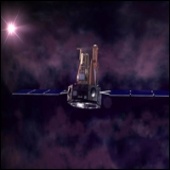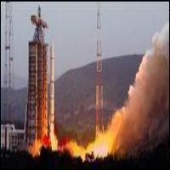ESA Science & Technology - News Archive
News archive
News archive
A multipoint analysis of Cluster data allows, for the first time, to locate the source of NTC radiation, triggering the need for more detailed generation and propagation models to explain new findings.
Published: 17 September 2004
An invitation is made to researchers to submit proposals to the 3rd Announcement of Opportunity for the INTEGRAL satellite.
Published: 13 September 2004
A new study of a large number of planetary nebulae has revealed that rings, such as those seen here around the Cat's Eye Nebula, are much more common than thought so far and have been found in at least one third of all planetary nebulae.
Published: 9 September 2004
Published: 19 August 2004
Published: 17 August 2004
Published: 13 August 2004
The strong stellar wind and intense ultraviolet radiation of a young hot star is blowing a bubble into the surrounding gas. The object, known as N44F, lies in our neighbouring dwarf galaxy the Large Magellanic Cloud.
Published: 13 August 2004
ESA's Cluster spacecraft has discovered vortices of ejected solar material high above the Earth. The superheated gases trapped in these structures are probably tunnelling their way into the Earth's magnetic 'bubble', the magnetosphere.
Published: 12 August 2004
Published: 6 August 2004
Published: 6 August 2004
At 07:05 UT (15:05 local time) 25 July 2004, the Chinese National Space Administration (CNSA) successfully launched TC-2, the second of two scientific satellites known as Double Star.
Published: 26 July 2004
Published: 23 July 2004
Testing of the Venus Express spacecraft is well on its way in Alenia, Torino. Most of the spacecraft units providing power, radio-frequency, attitude control and on board data handling functions have been mounted on the structure and tested.
Published: 12 July 2004
A new free software plug-in, released 8 June, makes a whole range of archival astronomical images and spectra in FITS format accessible to home astronomy enthusiasts.
Published: 8 July 2004
Herschel's primary mirror blank has been transported to Finland for a final polish prior to the application of the reflective aluminium layer early next year.
Published: 6 July 2004
The first set of raw images taken by the Cassini spacecraft were sent back to Earth showing detailed views of the Saturnian rings.
Published: 1 July 2004
Hubble has captured a subregion of the second largest star-forming region, N11, in the Large Magellanic Cloud.
Published: 1 July 2004
The Cassini-Huygens spacecraft followed a perfect orbit injection sequence and was confirmed to be in orbit around Saturn this morning, 1 July, at 04:11 UT.
Published: 30 June 2004
Published: 24 June 2004
Published: 23 June 2004
—
20 Items per Page















